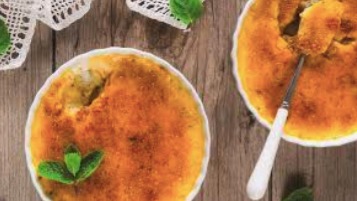- kinespanolmagazine

- Nov 25, 2019
- 3 min read

Food plays a big, but often overlooked, role in how we perceive and learn other cultures. Kinespañol would like to give you a brief course in Spain Cuisine : Origin and History. By studying the gastronomy, you can come to understand Spain history and culture since food Spanish people eat directly relates to the surrounding geography, the history of the country, and modern-day impacts of globalization.

Gastronomy and Geography
Traditional Spanish cuisine is often look down as an uncomplicated simplistic food. This has to do with its geographical situation. Firstly, since mountains run through Spain in many regions, created a physical barrier between the community, many dishes are based on the available fresh local ingredients at the location. This, however, does not mean that the Spaniard like to eat their food bland without any seasoning. They are in fact prioritize and proud in their fresh products by keeping all the flavor intact in their homely dish. This is also one of the reasons why Spanish cuisine is different from region to region. Spain is located in Iberian peninsula and is therefore surrounded by the waters. Naturally, seafood becomes the center of Spain’s gastronomy and categorizes the country as having a Mediterranean diet. The rest of Spain is a diverse terrain made up of mountain ranges, lush pastures, fertile farm grounds, extensive coastlines and more, which together provide quite the variety of fresh products. For example, Spain's famous hams are cured high in the mountains, vineyards and olive trees grow across flat lands, and fresh fruits and vegetables from throughout the country.

The Cultural Influences on Spanish Cuisine
Spanish cuisine today comes from the long history of Spain that united multiple kingdoms and endless cultures. As they settled in Spain, they have also influenced the history of Spanish food. Those kingdoms contribute their own ingredients and culinary traditions to Spanish gastronomy. For instance the olives were first introduced to the Iberian Peninsula by the Phoenicians. Almonds, fruits and light seasonings, on the other hand, were introduced into the Mediterranean diet by the Moors. Spain's vast array of rice dishes, saffron, cinnamon, and nutmeg also come straight from them. It may safely be said that, the abundant diversity of Spain make their cuisine fresh, rich and full of flavor!

New World Influence: The Americas' Impact on the distinctive cuisine of Spanish
Apart from its historical impact, the discovery of America by Christopher Columbus also resulted in the addition of products from the new continent arrived in Spain and immediately began to integrate themselves into the Spanish diet. Amongst the many products that crossed the Atlantic and arrived on Spanish peninsula are tomatoes, vanilla, chocolate, various beans, and potatoes (Nunn and Qian 2010, 163). Those ingredients become the staple of today's Spanish kitchen.

The Globalized Spanish Kitchen
Globalization has an enormous impact on food in Spain. Global trade, international transportation and accessible communication toll allows. Transnational companies like McDonalds, Subway, Burger King, and other big food industry chains to roam the streets of Barcelona and other big cities around Spain. This creates hybridity in Spanish cuisine in a large scale. For example, you can order the class gazpacho in every McDonalds' drive-thru.
The future of Spanish Cuisine
While it is true that globalization plays a big role on Spanish cuisine, we might not realize that food, similar to other aspects of one's culture, changes over time. Every society adapt, shift, combine their diet from the beginning of time. Spain is not an exception. With its long, complicated history, Spanish food has always evolved from Moorish occupation to the Columbian exchange to 2019! So next time when you are traveling to another country, try eating the local food! their unique gastronomy may secretly whisper their story to you without you noticing it!
Resources :
Arab and Moorish Influence on Spanish Food. (n.d.). Retrieved November 22, 2019, from
Perry, K. F. (2017). You Are What You Eat: Gastronomy & Geography of Southern Spain. The
Catalyst A Multidisciplinary Review of Undergraduate Scholarship at The University of
Southern Mississippi, 4(1), 48–72. doi: 10.18785/cat.0401.07
Nunn, Nathan and Nancy Qian. 2010. “The Columbian Exchange: History of Disease, Food,
and Ideas.” The Journal of Economic Perspectives 24(2): 183-188.
































